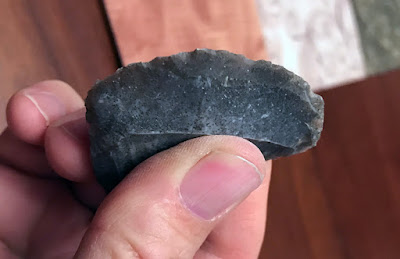The squirrels at our house
are a constant circus act, and provide us with amusement from dawn
till dusk. We pay them well by providing all the corn and seed they
can eat. We throw in a few peanuts every day. Sometimes there is
water in the bird bath... So they almost always have the necessities
of squirrel existence. And it is worth every nickle as this feeding
frenzy keeps them off of the roof, and away from the temptation of
chewing their way into our house. They have, however, started on the
patio furniture.
You might say we are the
mesa government... and they are the poor little squirrels trying to
scratch out a living, and we help them along. After all, we live
well, and in fact we have all of the money... they could not go to a
store, much less buy the things that we can provide for them. It is
sort of a squirrel welfare program. We are that 2% at the tippy-top
that can, and should, take care of their needs. And from what I can
tell, we are providing about 100% of their dietary requirements. We
have carefully worked out the system, so the squirrels have their own
feeder, and the birds have theirs. We want to make life fair here on
the mesa.
Of course, there are very
specialized feeders for one small sub-group, the humming birds. It is
true that they get special treatment. But then their food is very
cheap and low maintenance compared to the rest of our freeloaders,
and nobody else wants it. It's not a perfect system, but so far no
complaints.
The squirrels think this
arrangement is great. They are out there every day, playing their
hearts out, not a care in the world... some of them actually lay in
the feeder tray like epicurean Romans, scooping the grain and
shoveling it in with both hands. They tag-team that feeder, and they
never miss a day. And they never complain. They never question our
motives, or ask for more, or suggest that we could do more for them.
They are squirrels. The never get together and vote us out of office,
or call us mean names. It is a fairly peaceful coexistence with
mutual benefits.
I was watching them the
other day and suddenly it hit me, the beauty of Squirrel Justice.
They are doing better than they have ever done before, and we have a
backyard full of happy, daredevil bushytails. Even if it is an
absolute dictatorship.
I thought how absurd it
would be, if in some crazy acceleration of squirrel evolution, kind
of like Planet of the Apes, they evolved, organized, and had
elections. And the only way we could get their votes, so we could
continue to live there and be their rulers, was that we had to agree
to their demands. And another couple, who wanted our house, began to
promise the squirrels all kinds of crazy things... I don't know where
I got this crazy scenario... But the election became a referendum for
more feeders, more variety of seed, and truckloads of peanuts. They
ordered us to replace our dangerous electrical lines with
squirrel-friendly solar panels, and to dispose of the offensive
daffodil plants on the deck. Also they demanded more oak trees and a
24 hour veterinarian on the premises.
Now, the squirrels have
never bought their first seed. They have never done anything for us.
In fact, every time I walk into the back yard, they scamper away as
if I am their enemy! No squirrel has ever offered me as much as a
pecan pith. And they never plan to. In this imagined hell, they have
decided that since we can afford it, we should have to. And do it
more. And do all of these extra things. And the competing couple,
they began to gain support by accusing us of being rodent haters. I
swear, we never use the R word.
Funny Huh? Ridiculous,
that these cute little characters, so entertaining, but
underprivileged, could be so bossy. It's not like they have ever been
taxed or ever will be. They have never, will never ever carry any of
the burden of their welfare. They are squirrels. You don't tax
squirrels.
But I wondered, should
these dependents, who never contribute anything to the pot, have any
say about what kind of seed we buy, or how much we put out each day?
Should they get to vote and control us? They have a somewhat unfair
advantage, since there are many more of them than there are of us.
Should they be given a say about who buys the seed, or what seed they
buy, or how the mesa government manages the funds appropriated for
Squirrel Justice? Of course not, they are squirrels. It was a dumb
thought. I don't know how that popped into my mind.
And that's the point...
squirrels are delightful fur-bearing creatures, who work hard and
play hard and chisel every advantage they can out of their
environment... without endangering it of course, but they never have
a say about where their food comes from, or how much they should get,
because it's up to higher authorities, (God and His helpers) who do
what is best for them. They have no expectations to get anything,
because they have never really contributed to the largess which gives
to them so generously. It wouldn't be right. It would be.... nuts.
And as I watch them demolish the corn every day, I cannot help but
believe that they are grateful, in their own squirrel way.
And then there are people.
People. People are nothing like squirrels.













